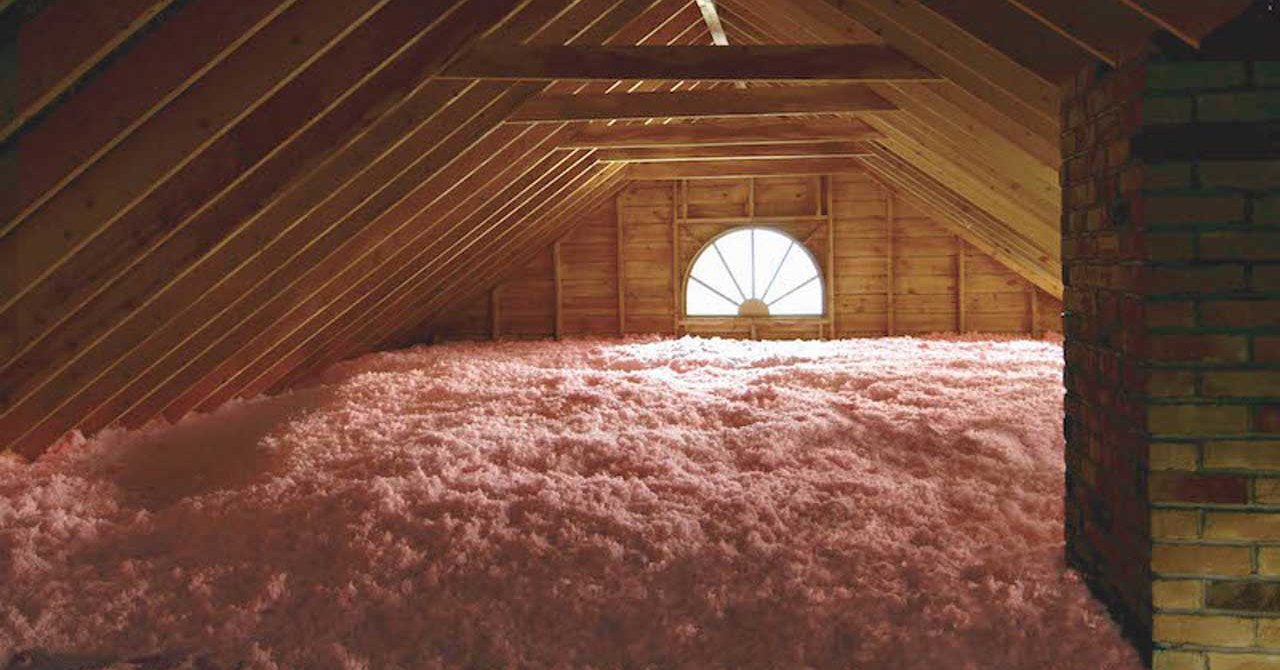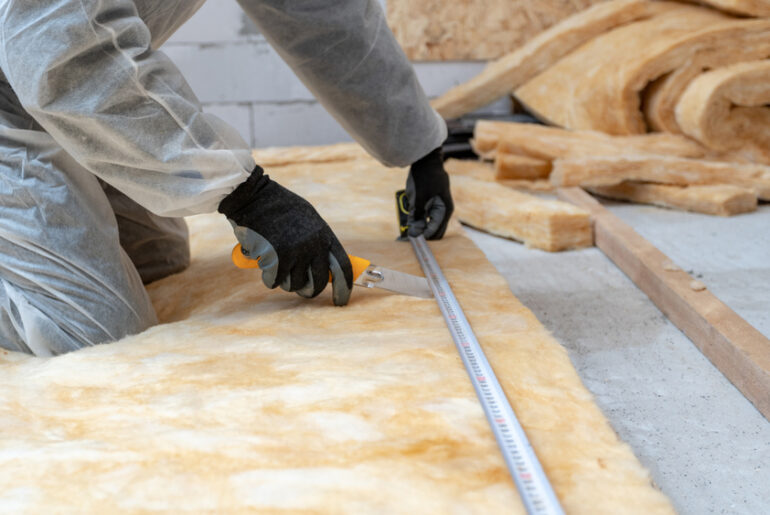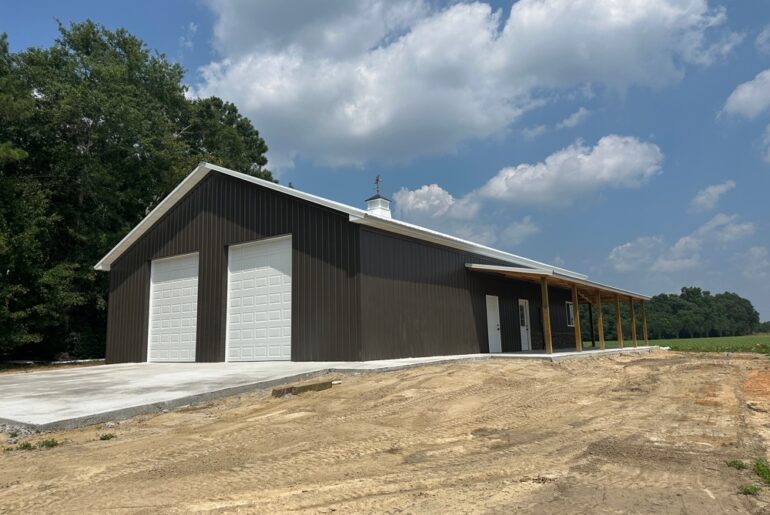Blown-in fiberglass insulation has gained a name in the insulation industry as an effective solution for thermal resistance and maintaining a comfortable, conditioned space. However, blown-in fiberglass insulation still has drawbacks that you need to consider.
Blown-in fiberglass insulation is known for settling over time and losing its thermal effectiveness after installation. It’s also prone to retaining water, moisture, and pest infestation. If improperly installed, its effectiveness will also decline.
Do these problems and disadvantages offset the benefits of installing blown-in fiberglass insulation? If you’re planning to install one at home, weighing the pros and cons is important.
Below, we’ll take an in-depth look at some problems and concerns that arise with blown-in fiberglass insulation, along with its benefits.
1. Settling Rate
Over time, blown-in fiberglass insulation settles, which reduces its effectiveness. This is because the blown-in insulation loses the air pockets trapped between pieces of insulation during installation. These air pockets are important because they define the thermal efficiency of the insulation.
When it settles, blown-in insulation decreases its R-value or overall thermal resistance and leaves a small uninsulated section or gaps at the top of the space. It also causes severe problems in energy efficiency. The settling usually happens after installation, gradually decreasing within the first few weeks and continuing over months and even years.
The settling rate may vary depending on the materials used. There are three different materials typically used for blown-in insulation. These are loose-fill fiberglass, cellulose, and rockwool. Among the three, cellulose blown-in insulation has the highest settling rate, losing up to 20% of its R-value. In contrast, loose-in fiberglass and rockwool insulation usually lose about 2 to 4% of its insulating capacity.
In addition, high moisture levels where the blown-in fiberglass insulation was installed can also worsen this problem, causing it to settle more quickly than usual.
2. Prone to Wetness
Since blown-in fiberglass insulation is made of spun fibers, it won’t absorb water. However, fiberglass can retain water, especially when exposed to water sources like leaks or burst pipes for prolonged periods.
Blow-in fiberglass insulation retains water when the water penetrates the air pockets between the tiny glass fibers, filling them with water. Unfortunately, the water droplets also replace the air inside the pores, further contributing to the wetness of blown-in fiberglass insulation. This also results in the insulation losing thermal resistance or its ability to slow heat transfer.
After holding water for long periods, blown-in fiberglass insulation will become compacted and soggy as the insulation’s weight increases. This results in the blown-in fiberglass insulation settling, temporarily losing its R-value and decreasing longevity.
In addition, blown-in fiberglass insulation takes longer to dry out, exacerbating the deterioration process. As a result, it loses density, decreasing its R-value and ability to transfer heat. And when it’s already completely soaked with dirty water, the glass fibers can stick and form clumps, permanently losing the insulation’s thermal resistance.
3. Prone to Mold
Blown-in fiberglass insulation is naturally mold resistant but can still succumb to mold and rot when in contact with excessive moisture over an extended period. In addition, because of its network of air pockets, dust, dirt, grime, and other contaminants can accumulate over time, which can trap moisture that promotes mold and mildew formation.
This can also lead to condensation problems as excessive moisture replaces the air inside the pockets with water droplets. When there’s condensation, there’s also a high chance of mold growing and spreading. Exposure to high moisture and humidity levels can decrease the blown-in insulation’s effectiveness and R-value, which is why it’s important to ensure the installation area is sealed before blowing.
4. Requires Professional Installation
Blown-in fiberglass insulation can be difficult to install independently as it requires special equipment, and its installation process is complex. Furthermore, improperly installed can decrease the blown-in insulation’s thermal effectiveness and lifespan, as its R-value is very sensitive to improper insulation.
In addition, one risk of improper blow-in fiberglass insulation installation is higher energy bills as the house will lose heating or cooling air through the roofs, walls, or windows. It will also promote mold and mildew growth due to leaks and moisture accumulation, which could damage the building structure. This happens because exterior elements like dust, water, and other debris can penetrate the insulation due to air gaps and settle there.
Another concern of installing blown-in fiberglass insulation is blowing it into spaces with obstruction, such as an outlet box or drainpipe, as it can hinder the insulation from filling the space, often leaving a gap uninsulated.
So, it’s best to hire a professional insulation installer when installing blow-in insulation to prevent installation problems and their risks.
5. Prone to Pest Infestation
Blown-in insulation is typically produced from recycled materials, which can attract pests like rodents, cockroaches, termites, beetles, and other insects. These pests love to create nests, burrow, and gnaw at the insulation, destroying the blown-in insulation.
As they eat the insulation, the pests can create holes that cause the energy and air to pass through. This decreases the blown-in insulation’s thermal efficiency and causes the energy bills to skyrocket.
The holes and gaps they leave behind also bring in dust, moisture, and other debris, reducing the insulation’s lifespan. These also leave behind waste and contaminants that can compromise the house’s air quality, exposing people inside to bacteria, parasites, and various diseases dangerous to families and pets.
In addition, pest infestation can weaken or destroy the home’s structure due to pests’ continuous trampling and gnawing on the blown-in fiberglass insulation.
Is Blown-In Fiberglass Still a Good Choice?
Despite its known disadvantages, blown-in fiberglass insulation is still a good choice, given its many benefits. These pros significantly outweigh the cons. This is why blown-in fiberglass insulation is still one of the popular and widely used blown-in insulation types in commercial and residential applications.
Here are some of the pros of blown-in fiberglass insulation to take into account:
- Efficiently fills hard hard-to-reach places. Since blow-in fiberglass insulation is made of loose strands of glass fibers that are “blown into place” using special blowing equipment, it can be used to fill the studs and joist cavities, seal gaps, cover attic floors, and other hard-to-reach places as it settles. It can even be blown into existing, closed-up walls without damaging finishes or structures.
- Affordable. On average, installing blown-in fiberglass insulation costs around $0.50 to $1.10 per square foot, making an affordable choice. It also has a labor cost that usually runs from $40 to $70 per hour.
In addition, several factors can affect the price range of installing blown-in fiberglass insulation. This includes the necessary R-value, house size, location, and complexity of installation.
For a 1,000-square-foot attic, installing blown-in fiberglass can range from $500 to $1,060 to reach R-60. The cost is also expected to be higher for older homes and if the location is in a cold climate zone.
Still, blown-in fiberglass is the least expensive among the three blown-in insulation types. Cellulose costs around $0.60 to $2.30 per square foot, while Rock wool ranges from $1.40 to $2.10 per square foot.
- Fire-resistant. Blown-in fiberglass insulation is fire-resistant and non-combustible as it’s made from loose glass fibers. It can withstand heat and burning to a certain degree and cannot catch on fire. However, it can melt when exposed to extremely high temperatures. Still, it’s an excellent insulation type, as it can protect your house and doesn’t contribute to the spread of fire.
- Capping (Installing over existing one).You can install cellulose blown-in insulation over the existing blown-in fiberglass insulation; a process called capping. This helps increase the existing blown-in insulation’s lifespan and increases thermal resistance and energy efficiency. It can be blown indirectly over the existing insulation’s top for added layer and protection. It also helps seal gaps and spaces, making it a cost-effective and less time-consuming insulation.
- Environmentally-friendly. Blown-in fiberglass insulation is made of loose glass fibers, which are considered recycled waste materials. This makes it an excellent choice for green, environmentally friendly, and sustainable insulation solutions. Aside from being eco-friendly, it’s built to last while providing great energy efficiency.
- Readily Available. Blown-in fiberglass insulation is readily available at most home improvement stores and lumberyards, providing ease of access to homeowners.





